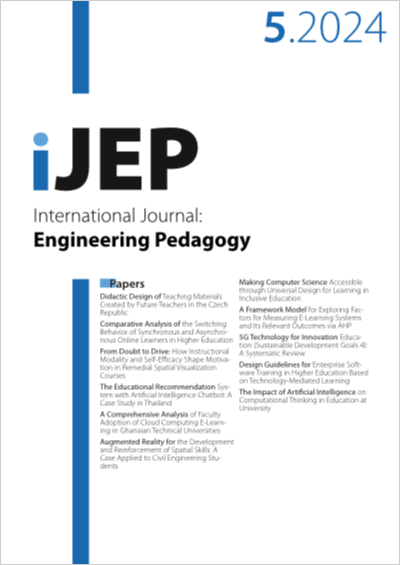Augmented Reality for the Development and Reinforcement of Spatial Skills: A Case Applied to Civil Engineering Students
DOI:
https://doi.org/10.3991/ijep.v14i5.47473Keywords:
Spatial skills, Engineering curriculum, Experiential learning, Augmented realityAbstract
The architecture, engineering, construction, and operation (AECO) industry has brought transformations within the field. Despite the changes, traditional teaching methods such as analyzing two-dimensional plans and models are still being used in training processes, which do not effectively promote the development of spatial skills. In this context, augmented reality (AR) can be used as a tool to translate two-dimensional information into three-dimensional space. Thus, the present study explores the use of the VT-Platform AR tool to develop and reinforce spatial skills among undergraduate civil engineering students. The study follows a quantitative approach with a descriptive scope and an experimental design. Students in the sanitary engineering subject were divided into two groups: an experimental group and a control group. A short-term teaching-learning methodology was proposed for the experimental group using the VT-Platform AR tool. Both groups took the differential aptitude test (DAT) to measure their spatial skills. The experimental group showed a higher average score compared to the control group, with a difference of 29.8%. Furthermore, the use of the VT-Platform AR tool helped standardize the level of spatial skills within the experimental group. It was concluded that using the VT-Platform AR tool can effectively develop and reinforce spatial skills among students.
Downloads
Published
How to Cite
Issue
Section
License
Copyright (c) 2024 Lisette Abrahamzon Garcia, Katerina Galantini Velarde, Ana Luna Torres

This work is licensed under a Creative Commons Attribution 4.0 International License.



